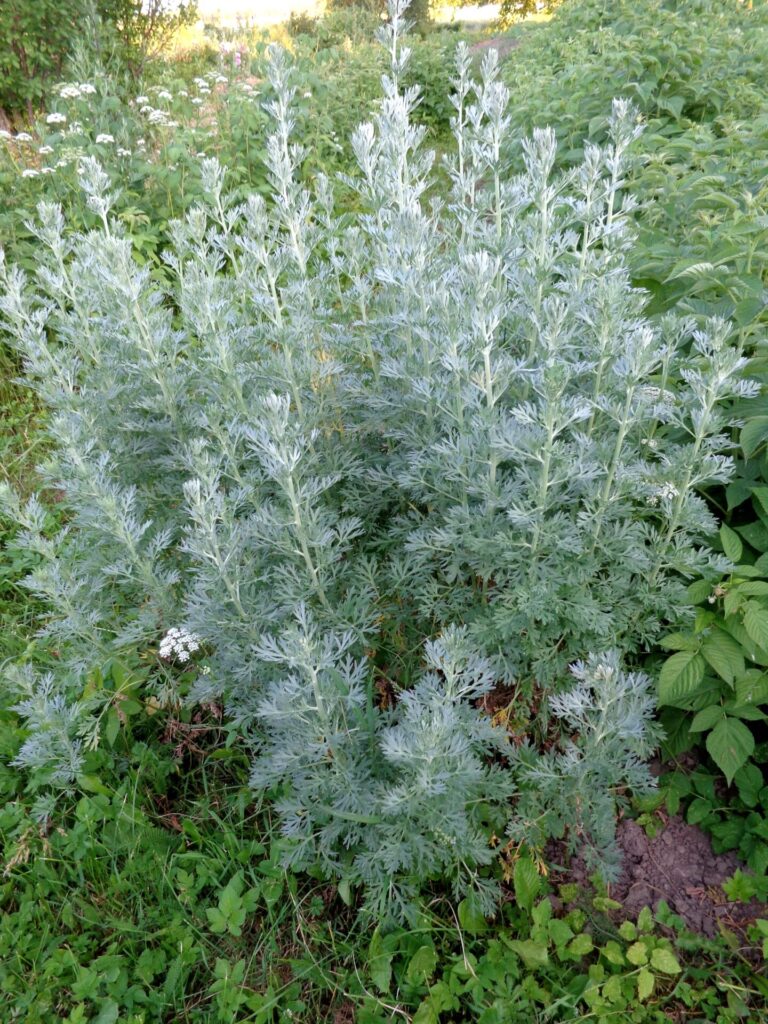This herbaceous perennial evergreen is of the genus Artemisia in the family Asteraceae.
It can grow to reach heights between 1- 3ft. and it can live up to 10 years if provided with the proper
growing environment. In the wild, wormwood can be found growing plentifully near cliffs, roads, and
riverbanks. The flowering beauty blooms during the summer and autumn months, and wormwood is
pollinated by the wind. This unique plant is actually known as much for its one-of-a-kind foliage as it is
for its flowers. Wormwood plants produce three different types of leaves on the bottom, middle and top
of the plant. The leaves at the bottom of the stem are bipinnate or tripinnate leaves with long petioles.
On the middle of the stem are smaller, less divided leaves with much shorter petioles, and at the top,
the plant produces very simple leaves without petioles at all. Wormwood boasts a wide variety of
greenish-gray foliage and stunningly-bright yellow tubular flowers, and the plant comes equipped with
both male and female reproductive organs. The pale silvery-white foliage of the wormwood plant also
makes an excellent contrast to the darker and greener leaves in the garden with its characteristic
feathery fan shapes. The leaves are covered in glands that release a substance that repels insects.
Other common names: artemisia absinthium, absinth sage, absinth sagewort, (Artemisia vulgaris)
mugwort, Artimisia Alaskana, Stinkweed, felon herb, sailor’s tobacco, and chrysanthemum weed.
There’s an ecological threat since it does invade coniferous and hardwood forests, prairies, meadows,
grasslands, fields, and disturbed areas.






